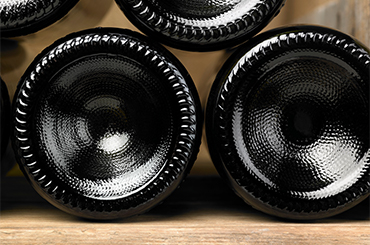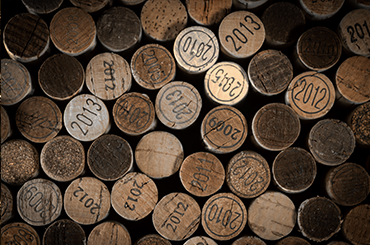Q. I've heard that riesling suffers a ‘dead spot’ from about two to five years of age, and is therefore best consumed either very young or after five-plus years, but not in between. Is this true?
Miles Kenyon
According to riesling guru Jeffrey Grosset, this was perhaps once the case – before the introduction of screwcaps. “It’s my belief that the dip that may have been suffered in the past doesn’t occur or certainly not to the same extent,” he says. The reason for this, according to the founder of Clare Valley winery Grosset, is that screwcaps are slightly permeable. Due to the fact that every screwcap is essentially made the same, the rate of ageing or influence of permeability is the same for every bottle. This means the rate of uptake of oxygen is very low and the wine therefore undergoes a gradual development, ensuring a stable ageing process.
As for the cellaring life of riesling, Jeffrey says there are a few factors to consider. A fully mature riesling, with about 10 to 15 years of age on it, can display distinct honey and toast characters. “But do you actually like this? Some people don’t,” he says. Alternatively, Jeffrey says a good riesling with about one to three years on it shows fresh lime or a mix of citrus flavours and a slightly more rounded palate than a typical riesling on release. “Or do you just prefer a young, fresh, flavoursome riesling? If so, feel free to crack open the bottle you bought today!”
Q. I am a lover of Hunter Valley semillon – both young and aged. My biggest challenge is knowing the ultimate time to open my aged semillon, so I’d love some advice on it.
Mary Stanley
It has often been said that semillon undergoes a ‘dip’ in development before its characters shine again. But just as in the case of riesling above, the Hunter Valley’s Bruce Tyrrell believes screwcap has made all the difference. He suggests what was once deemed a dip was perhaps more likely to be other cork-related issues such as random oxidisation. As for timeframes, Bruce has some tips, but notes that it all depends on the characters you find appealing in aged semillon. “You can drink them young, and at about four to five years old they’re in that first stage of bottle age, so you’re getting some of that extra complexity and lovely fresh acid,” he says. “Then at about 10 years of age, there’s that amazing complexity.” After that, Bruce suggests a great semillon can live for 30 to 40 years, but from about 10 to 12 years, that rate of change slows.
Q. How long should you cellar a good Australian cabernet sauvignon?
Matthew Paap
Before you go stashing away cases of cabernet sauvignon, there are a couple of things to consider. Wynns Coonawarra Estate’s long-time winemaker Sue Hodder says you obviously have to be able to rely on your cellar for many years and it also comes down to taste. “Personally, for me, I like a good Australian cabernet at around eight to 12 years, as a really general rule of thumb,” she says.

Personally, for me, I like a good Australian cabernet at around eight to 12 years, as a really general rule of thumb
Q. Which varietals can I drink now in the knowledge they won’t benefit from time in the cellar?
Sarah Kay
Almost all wines are made for enjoyment on release and producers will tell you to throw caution to the wind and savour them in all their youthful glory. The trick is that some bottles, more than others, will gain depth, texture, complexity and additional nuances with time in the cellar. The general rule, according to Peter Nixon of Dan Murphy’s wine panel, is that the more commercial or more approachable a young wine is, the less suited it is for the cellar. The varietals and styles that are loved for their freshness, fruitiness and vibrancy – think sauvignon blanc and rosé – are best enjoyed on release, although again, there are always exceptions to the rule.
Q. How do I select Australian pinot noir to cellar and how long can I cellar them?
Evelyn Towers
Pinot noir can seem like an incredibly complex beast, but famed producer Phillip Jones of Victoria’s Bass Phillip puts it in simple terms. “What I look for in a pinot noir that can be cellared for 10-plus years, which often means 20, is a lot of ‘flavour power’ at the back of the palate,” he says. “Does it excite you with complexity and a lingering flavour at the finish? It’s all about complex, deep, powerful flavour. End of story.” Phillip adds that another key element is when a pinot noir makes you salivate on the finish. “If saliva is pumping out of your tongue for the next two or three minutes [after your last sip], when you cellar those wines, that’s when you get that peacock’s tail of flavour on the finish.”
Inevitably for Phillip, cellar-worthy pinot is the same thing as great pinot. “Great wine is wine that tastes differently with every sip,” Phillip adds. “And great wine is wine that becomes enhanced with cellaring – usually. If wine is reasonably one-dimensional, it’s not going to improve a lot.”
Q. How long can I store sparkling wine?
Christine Kershaw
There are a few guiding principles, according to Tyson Stelzer. “Most of the time, Champagne and sparkling wines are pre-aged before you buy them,” says The Champagne Guide author. Right now, for example, people can buy a bottle of Champagne with 21 years of age on it – the Charles Heidsieck Blanc de Millenaires 1995. “That’s the glorious benefit of buying these wines – you don’t have to do the Burgundy and Bordeaux thing where you put it in your cellar before you can touch it,” Tyson says. Meanwhile, also on shelves is the “wonderful” 2008 vintage, which he says is one of the most age-worthy Champagne vintages. Tyson adds that most non-vintage sparklings and Champagne won’t benefit from further age – with a couple of premium exceptions.







